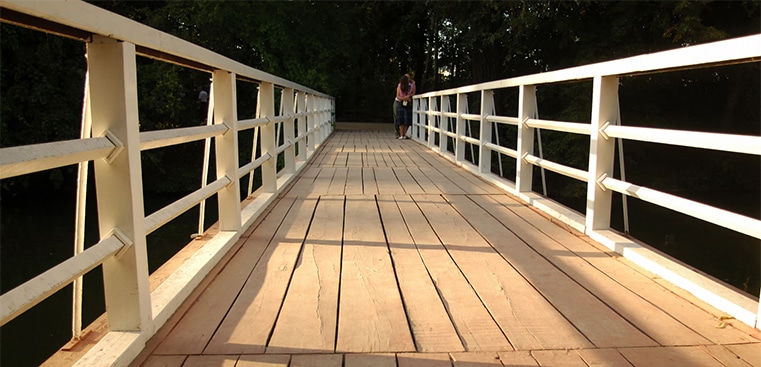May 28 2019
Wood is a living material that varies with changing humidity and temperatures. Sabina Huč, a former scientist at the University of Borås, has created a model that can predict wood’s behavior.
 (Image credit: University of Borås)
(Image credit: University of Borås)
It has already been employed to explain what is occurring to wood from the royal vessel Vasa when the climate in its museum changes.
For thousands of years, wood has been used by people for construction. The fact that the material contracts and expands is universal knowledge. However, there has not been much study on exactly how and where cracks can happen in a building.
Sabina Huč has recently obtained her doctorate in Applied Mechanics from Uppsala University. She has studied properties of wood and has associated physics and mechanics in a mathematical model. It predicts different kinds of variations in wood, so-called elastic, viscoelastic, and meconosorptive responses, as well as swelling and shrinkage.
The purpose is to better understand and predict wood's behavior over time.
Sabina Huč, Former Researcher, University of Borås
Experiments of pine, oak, glulam, and spruce samples were analyzed where they were exposed to mechanical loads in an environment of changing humidity.
“The results are very promising; the model I have developed is in line with the experiments,” says Sabina Huč.
Lack of Knowledge can Cost
Although European building codes are based on science, more knowledge is required on how natural changes in the surrounding environment impact load-bearing wooden structures. Staffan Svensson, professor of Building Technology at the University of Borås and Sabina Huč’s supervisor, is interested in this domain. It is expected that the model can be used when new European construction standards for wooden structures are created.
“The lack of knowledge means that the industry requires over-dimensioning when building, which means over-consumption and higher costs,” says Staffan Svensson.
Sabina Huč’s model links mechanics and physics. It helps explain what happens to wood in an entirely new manner. One case of a field of application is predicting harmful tension conditions that may happen. It will be used in the research to conserve the old royal vessel Vasa, which was submerged in 1628 and was recovered in 1961. A new load-bearing support structure is to be constructed in order to minimize the stresses on Vasa. In this case, the work will help anticipate how the wood will be affected in the long term.
The doctoral thesis was presented at Uppsala University on March 22nd, 2019.